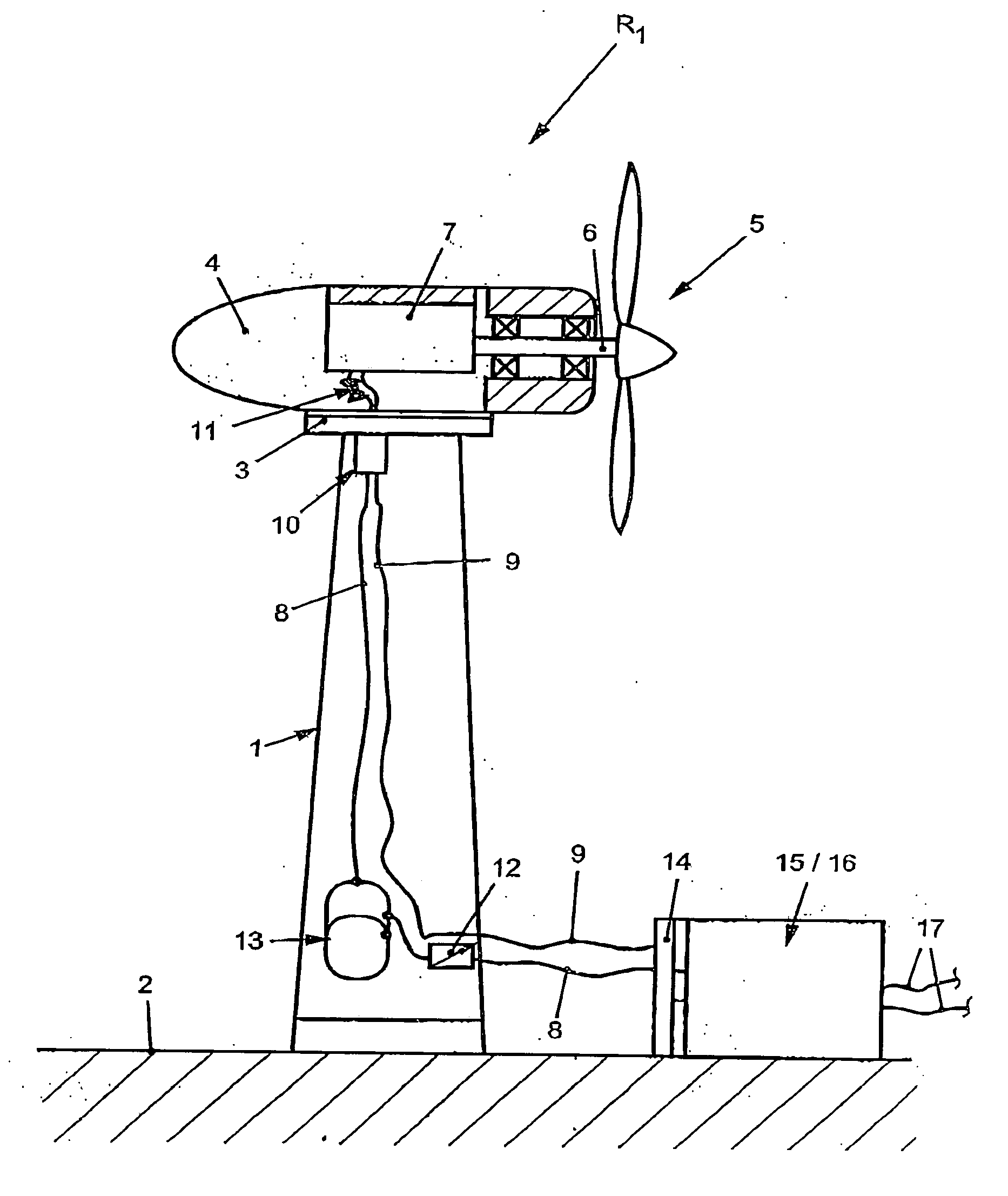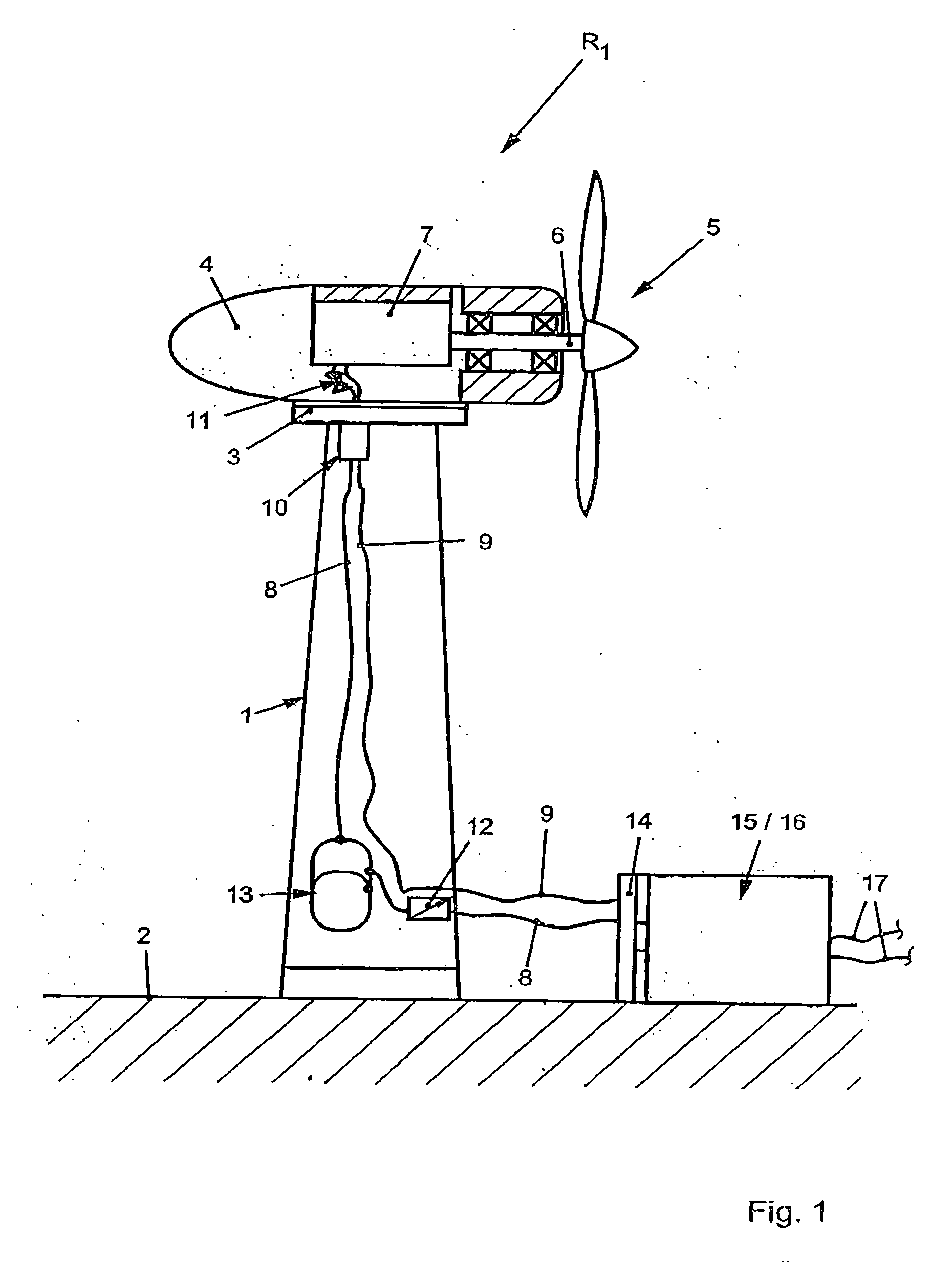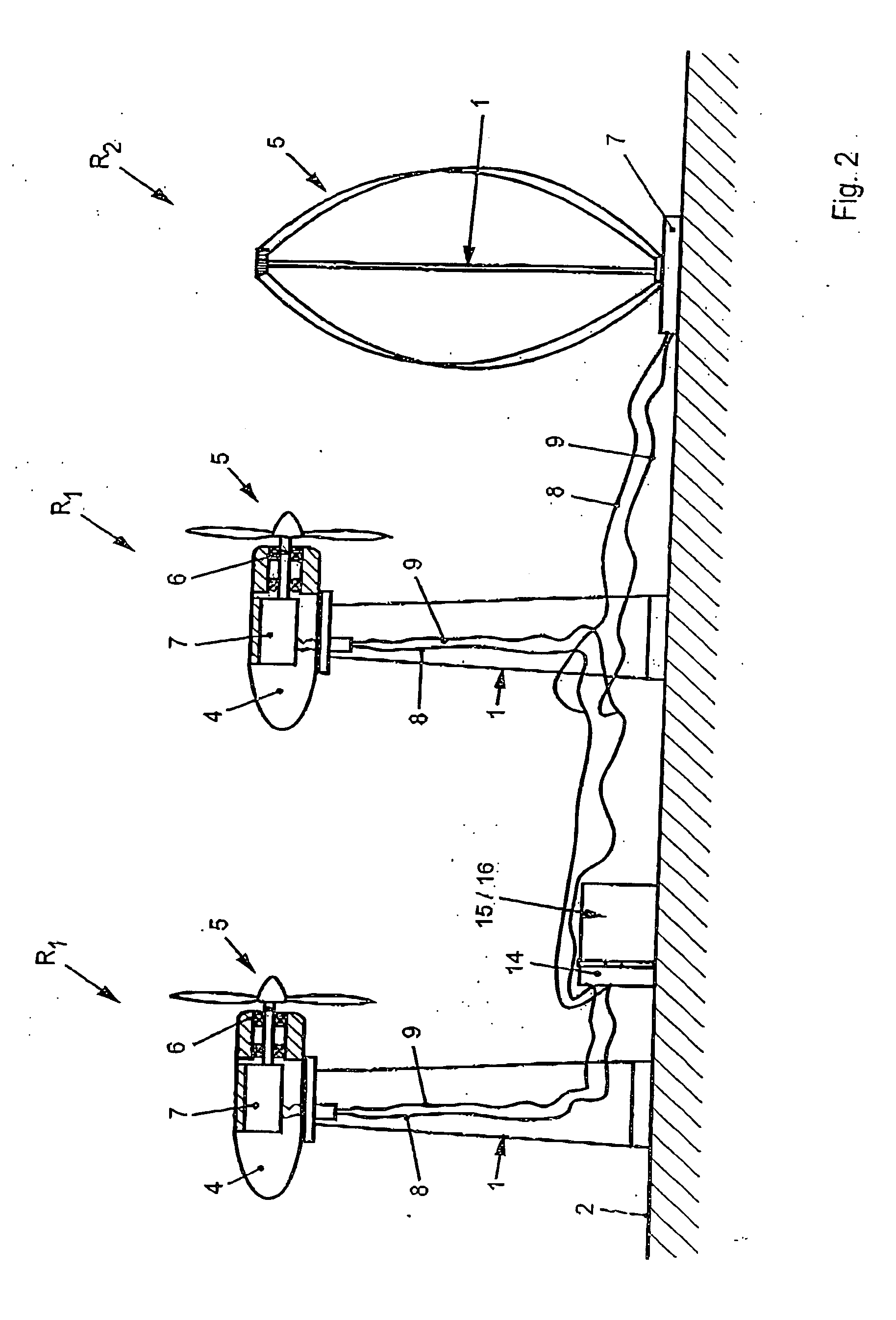Wind power machine
a wind power machine and wind power technology, applied in the direction of motors, engine fuctions, motors, etc., can solve the problems of high installation difficulty, high weight of the generator, and high cost of the machine, and achieve the effect of easy maintenance and replacement, reduced cost, and easy brakes
- Summary
- Abstract
- Description
- Claims
- Application Information
AI Technical Summary
Benefits of technology
Problems solved by technology
Method used
Image
Examples
Embodiment Construction
[0033] As is shown in FIG. 1, a wind power machine R1 according to the invention has a pylon 1 which is installed on a base 2. The pylon 1 is seated on a pylon attachment 4 via a bearing element 3 such that it can rotate, and the pylon attachment 4 is fitted with at least one rotor element 5.
[0034] The rotor element 5 is driven by the wind such that it rotates about a rotor shaft 6.
[0035] According to the invention, the rotor shaft 6, and hence the rotor element 5, are connected to a hydraulic pump 7. The rotational movement of the rotor element 5 and of the rotor shaft 6 allows the hydraulic pump 7 to be driven and to produce a hydraulic pressure, which is passed on via a first line 8. A return line 9 is furthermore likewise connected to the hydraulic pump 7.
[0036] The line 8 and the return line 9 between the hydraulic pump 7 preferably open into a coupling 10, which compensates for and equalizes any rotational movement of the pylon attachment 4 with respect to the rigid pylon 1...
PUM
 Login to View More
Login to View More Abstract
Description
Claims
Application Information
 Login to View More
Login to View More - R&D
- Intellectual Property
- Life Sciences
- Materials
- Tech Scout
- Unparalleled Data Quality
- Higher Quality Content
- 60% Fewer Hallucinations
Browse by: Latest US Patents, China's latest patents, Technical Efficacy Thesaurus, Application Domain, Technology Topic, Popular Technical Reports.
© 2025 PatSnap. All rights reserved.Legal|Privacy policy|Modern Slavery Act Transparency Statement|Sitemap|About US| Contact US: help@patsnap.com



